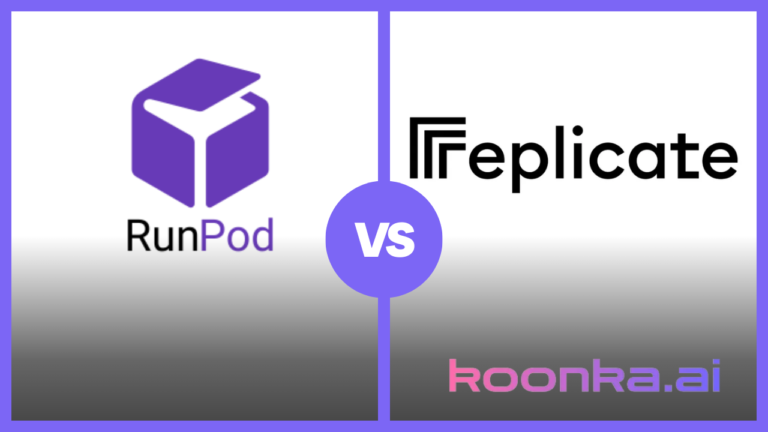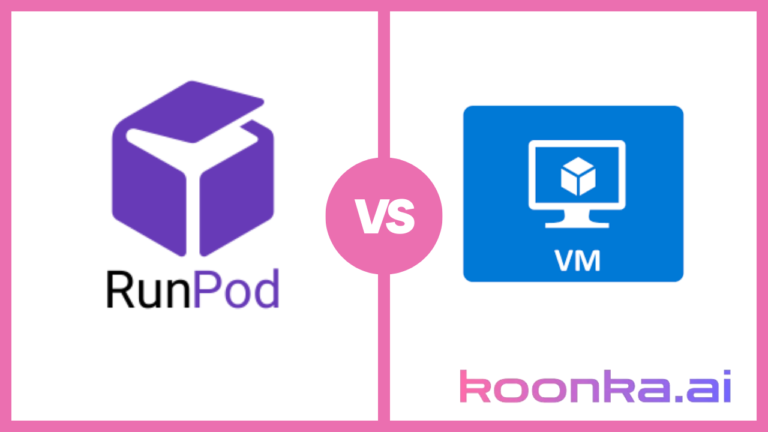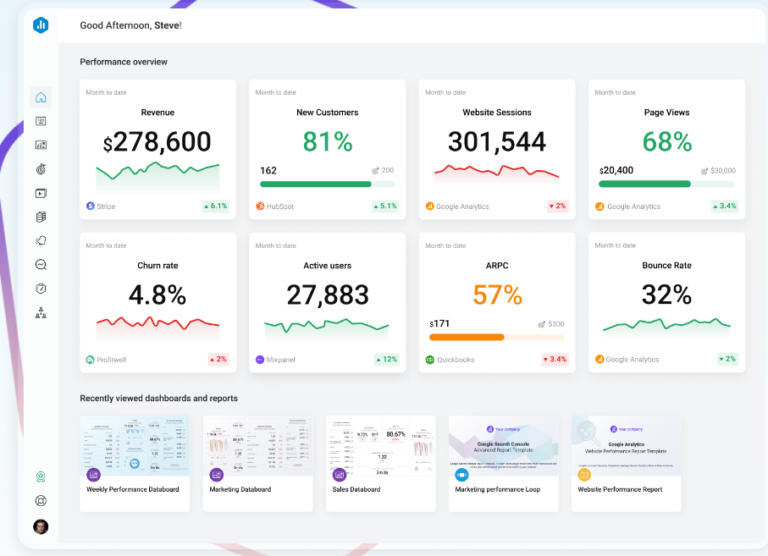Salad Cloud Review: Scalable GPU Services for AI/ML?

Cloud GPU services are all the rage, especially for AI, ML, and rendering workloads. But most providers charge an arm and a leg for top-tier GPUs. That’s where Salad Cloud steps in, promising to make high-performance GPUs accessible to everyone, starting at just $0.02/hr.
But does it live up to the hype? Let’s dig deep into its GPU services—pricing, performance, and more—to find out if it’s the right choice for you.
Table of Contents
Our Verdict
Salad Cloud offers one of the most affordable GPU services on the market, backed by a distributed, green network of consumer GPUs. It’s perfect for AI/ML workloads if you’re on a budget, but there’s a trade-off in terms of availability and consistency compared to traditional providers.
Pros and Cons of Salad Cloud
Pros
- Unbeatable pricing: GPUs start at $0.02/hr.
- Incredible scalability: Access thousands of GPUs worldwide.
- No DevOps headaches: Fully managed container service.
- Transparent pricing: Pay only for what you use.
- No data transfer costs: No ingress/egress fees.
- Environmentally friendly: Uses idle GPUs from gamers.
Cons
- Consumer GPUs: Not ideal for training large-scale AI models.
- Limited enterprise features: Missing some advanced tools.
- Availability: May face occasional delays with GPU allocation.
- No free trial for GPU services.
GPU Models and Pricing

Salad Cloud’s pricing is its biggest selling point. Here’s a snapshot of their GPU options:
- High-End Models (RTX 4000 Series):
- RTX 4090 (24 GB): $0.18/hr
- RTX 4080 (16 GB): $0.13/hr
- RTX 4070 Ti (12 GB): $0.10/hr
- Previous Gen Models (RTX 3000 Series):
- RTX 3090 Ti (24 GB): $0.13/hr
- RTX 3080 (10 GB): $0.09/hr
- RTX 3060 (12 GB): $0.06/hr
- Budget Models (GTX 1000 Series):
- GTX 1080 (8 GB): $0.03/hr
- GTX 1060 (6 GB): $0.02/hr
Salad Cloud’s pricing calculator makes it easy to estimate costs, and its pay-as-you-go structure ensures no hidden fees.
Choose from NVIDIA and AMD GPUs like H100, A100, and L40S, designed for speed, cost-efficiency, and scalability. Sign up now!
Performance and Infrastructure
Salad Cloud’s infrastructure is built on an innovative, distributed network of GPUs sourced from gamers, esports hubs, and other idle hardware around the globe. Unlike traditional data centers that rely on fixed, high-cost hardware, Salad Cloud taps into unused consumer GPUs, delivering unparalleled scalability at a fraction of the price. This decentralized model also has a smaller carbon footprint, making it a more sustainable choice for cloud computing.
The network supports an impressive range of workloads, including AI inference, batch jobs, rendering, and other GPU-heavy tasks. For these use cases, the performance-to-cost ratio is hard to beat. GPUs like the RTX 4090 and 3090 Ti offer strong performance, rivaling traditional cloud services for tasks that don’t require enterprise-level GPUs like NVIDIA A100 or H100.
However, there are limitations. These consumer GPUs aren’t ideal for massive AI training workloads or high-stakes, latency-sensitive applications. They’re better suited for startups, developers, and researchers focused on scaling smaller tasks efficiently. The platform’s lack of uniform hardware might lead to slight variations in performance across jobs, depending on node availability and workload requirements.
The fully managed container service ensures that users don’t have to worry about infrastructure management. This eliminates the need for provisioning virtual machines or dealing with DevOps, letting users focus purely on their projects. Additionally, Salad Cloud’s on-demand access makes it easy to scale resources up or down as needed, without the risk of over-provisioning.
Salad Cloud offers a unique balance of affordability, flexibility, and eco-friendliness. For businesses or individuals looking for a cost-effective way to handle GPU-heavy workloads, its distributed infrastructure and performance capabilities provide an excellent alternative to traditional hyperscalers, particularly for AI inference and batch-processing tasks.
Storage and Networking
Salad Cloud simplifies data handling with its no-fee policy for data transfers, eliminating ingress/egress fees that often inflate costs on traditional cloud platforms. This alone makes it a standout option for budget-conscious developers and startups. Whether you’re uploading large datasets or transferring results, you can do so without worrying about unexpected costs eating into your budget.
The platform’s multi-cloud compatibility ensures seamless integration with existing setups. If you’re already using other cloud providers, Salad Cloud can complement those resources, giving you the flexibility to optimize your workload across different environments. This feature is particularly useful for hybrid deployments or when transitioning workloads to more affordable GPU options.
Salad Cloud’s global edge network ensures low latency performance by deploying workloads on nodes closer to the end user. This setup minimizes delays, making it suitable for tasks that require real-time responsiveness, such as AI inference or rendering pipelines. However, the distributed nature of the infrastructure may lead to slight inconsistencies in performance. Node availability, hardware variations, and network load can sometimes affect speeds, though these instances are generally rare.
Storage configurations are customizable to meet a wide range of needs, from lightweight tasks to more memory-intensive applications. While Salad Cloud doesn’t emphasize storage as a core feature, its focus on GPU processing ensures that storage complements the overall workflow efficiently.
The combination of no data transfer fees, multi-cloud compatibility, and a globally distributed network makes Salad Cloud a cost-effective and flexible choice for AI workloads, batch processing, and computational cuisine tasks. While it may not offer the same enterprise-level guarantees as traditional hyperscalers, its network is well-suited for most small to medium-scale applications, especially those looking to maximize value without sacrificing performance.
Launch GPU instances instantly or consult CUDO experts for tailored solutions to meet your computing requirements. Sign up now!
Ease of Use
Salad Cloud makes deploying GPU workloads as straightforward as possible. Their fully managed container service removes the need for managing virtual machines or dealing with complicated DevOps setups. Whether you’re new to cloud computing or a seasoned developer, the platform offers an intuitive experience that simplifies everything from setup to scaling.
Getting started is easy. With just a few clicks, you can containerize your application and deploy it across Salad Cloud’s global network of GPUs. The process feels seamless thanks to a clean interface that prioritizes usability. Even if you’re unfamiliar with distributed networks or cloud infrastructure, the platform’s detailed documentation walks you through every step, making it approachable for all skill levels.
One standout feature is Salad’s pricing calculator. This tool lets you customize GPU, vCPU, and RAM requirements upfront while showing you exact costs in real-time. No hidden fees or surprise charges—just transparent, affordable cloud computing tailored to your needs.
For developers juggling multiple cloud setups, Salad’s multi-cloud compatibility allows you to integrate workloads with existing configurations. And with on-demand access to resources, scaling up or down happens effortlessly, without over-provisioning or idle costs.
While the platform isn’t packed with advanced customization options found in enterprise-grade solutions, it’s ideal for smaller teams, startups, and individuals who value simplicity and cost savings. The absence of ingress/egress fees and minimal DevOps overheads further enhances usability, letting you focus on your work rather than infrastructure management.
Salad Cloud’s thoughtful design and user-friendly tools ensure a hassle-free experience. Whether you’re tackling machine learning, AI inference, rendering, or crypto mining, it delivers everything you need to get started quickly and efficiently, making computational workloads feel less like a chore and more like a breeze.
Customer Support
Salad Cloud provides basic yet effective customer support, though it falls short of enterprise-level standards. For general inquiries, their tech support team is available via email, and the website features a comprehensive FAQ section covering common questions about pricing, deployment, and features. For businesses with larger workloads, their sales team assists with custom contracts and volume discounts, ensuring tailored solutions for enterprise needs.
However, Salad Cloud lacks features like 24/7 support or live chat, which may be a downside for users needing immediate help with urgent issues. Response times can vary, and troubleshooting more complex deployment problems might require some patience.
While not as robust as the support offered by major hyperscalers, Salad’s support structure aligns with its affordable cloud model. If you’re looking for low-cost GPU services and can work within their current support offerings, it should suffice for most use cases.
Save big with cost-effective GPU pricing—rent the RTX A6000 for just $0.30/hr for long-term workloads. Sign up now!
Who Should Use Salad Cloud?
Salad Cloud caters to a diverse range of users, from developers and researchers to companies seeking affordable compute solutions. If you’re exploring cloud GPU services but don’t want to overspend, this platform could be a game-changer for you. Let’s break down who benefits most from using Salad Cloud.
1. Startups and Small Businesses
Startups often struggle with high infrastructure costs, especially when scaling machine learning or AI workloads. Salad Cloud offers on-demand access to the lowest priced consumer GPUs, starting at just $0.02/hr. This pricing makes it one of the most affordable cloud solutions for young companies needing GPU power without a long-term commitment. With Salad Cloud, you save money and focus more resources on growing your business.
2. Developers and Researchers
Whether you’re an AI enthusiast working on machine learning models or a researcher running simulations, Salad Cloud’s pay-as-you-go pricing lets you deploy GPUs affordably. The computational cuisine of GPUs they offer allows you to experiment with tools like Stable Diffusion, Whisper, or custom ML models without blowing your budget. You can also rely on their tech support and detailed documentation to troubleshoot deployment issues.
3. Freelancers and Independent Creators
Independent developers often face challenges balancing performance and cost. Salad Cloud bridges the gap by offering affordable cloud computing with flexible configurations. For text-to-image, rendering, or any GPU-intensive tasks, you can rely on their on-demand access to scalable resources. Creators can also explore innovative tools like the salad app to integrate workflows seamlessly.
4. Crypto Miners and Gamers
Crypto miners and gamers can benefit indirectly from Salad Cloud through salad technologies, which repurpose idle GPUs. Many gamers use the salad app to monetize unused GPU cycles, turning them into passive income or free money through Salad’s earn rewards program. This concept—where GPUs that often sit idle power scalable cloud workloads—is at the heart of Salad’s computational cuisine.
5. Businesses Looking to Reduce Costs
For enterprises, Salad Cloud offers a sustainable way to scale GPU workloads without the high prices of traditional hyperscalers. They provide transparent pricing, so you know exactly what you’re paying for. This approach makes Salad an attractive choice for AI inference, batch processing, and rendering tasks. Companies can use their distributed network to achieve results with unmatched efficiency and affordability.
6. Green Tech Enthusiasts
If you care about sustainability, Salad Cloud’s network aligns with your values. By activating GPUs that typically sit idle, the platform reduces the environmental impact of traditional crypto mining and big data centers. This vision supports a greener, distributed future while offering affordable cloud computing for all.
Salad Cloud provides a perfect balance of affordability, scalability, and simplicity. With its lowest-priced consumer GPUs, it’s one of the most cost-effective platforms for GPU-heavy workloads. Whether you’re in AI, crypto, or just want to earn rewards, Salad Cloud’s mix of cutting-edge salad technologies and user-focused innovation makes it a great choice for anyone looking for reliable, on-demand access to cloud computing.
Is Salad Cloud Worth It?
For most users, the answer is a resounding yes! Salad Cloud shines in affordability, scalability, and ease of use, making it a compelling option for anyone needing cloud GPU services. Its lowest priced consumer GPUs are ideal for machine learning, AI inference, rendering, and other GPU-heavy tasks. Starting at just $0.02 per hour, the cost savings alone make it worth considering, especially for startups, researchers, and independent developers.
What sets Salad Cloud apart is its simplicity. There’s no need to manage virtual machines or navigate complex pricing structures. You pay only for the time your GPUs are actively running workloads—no surprises. Plus, their on-demand access means you can scale up or down whenever needed. This flexibility is perfect for fluctuating workloads.
That said, Salad Cloud isn’t a one-size-fits-all solution. For enterprise-level workloads requiring massive, high-end infrastructure or heavy-duty compliance, hyperscalers like AWS or Google Cloud may still be better options. However, Salad excels for smaller operations or as a complementary service for cost-effective AI/ML production.
With its affordable cloud pricing, innovative use of idle GPUs, and user-friendly interface, Salad Cloud is undoubtedly worth considering. For most use cases, it delivers unmatched value and efficiency.







